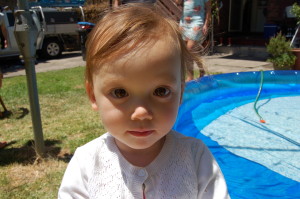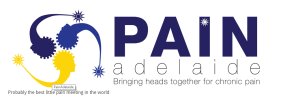The idea that what is going on in a person’s life can have an influence on their pain, can be a difficult sell to a patient with pain. Sometimes even for ‘painiacs’ like myself, it is hard to see the wood for the trees and stop yourself from separating out the bio from biopsychosocial. Being mindful about our own experiences with pain as a practitioner can teach us many things that we can use in our clinical practice.
Years ago I had low back pain. It had been around for about 6 years, but didn’t have any real functional impact on my life. It was there, I was distressed about it to a degree but it didn’t stop me doing anything. I had some funny concurrent symptoms which prompted me to present for a medical review. I had an MRI and nothing was found. The other symptoms disappeared and the very sensible referring doctor simply told me: Just get strong. Three simple words, combined with his confidence and the negative MRI were incredibly reassuring. I did get strong and about 4 months later the back pain was no longer a daily problem. Within 12 months it had almost completely gone. Rarely, certain biomechanical stresses will tip it over into a flare up – sitting for prolonged periods and certain exercises at the gym, if I overdo it. When this occurs, it tends to behave like chronic pain– it doesn’t have a reliable pattern, doesn’t respond well to pain medications and the pain can be a lot more intense than what you might expect for such simple stresses.
Earlier this year I was booked to go to a conference overseas. In preparing for it, I had thought briefly about the fact that I rarely sat these days, and that the big flight, combined with 3 days at the conference was more sitting than I was used to. I was aware that my back might get a bit sore. Three days prior to the departure day, we discovered a large, mysterious lump on the side of my 22 month old daughter’s head. We took her to the childrens hospital and an appointment with a surgeon was made for the day that I was due to be leaving. I was beside myself with worry.
We had a lot of discussion around whether I should go or not. The tickets were non refundable and I had been looking forward to going for a long time. It was unlikely that any scans or surgery were going to happen in the time I was away, owing to the weekend in the middle. My husband and I decided that I should go, and could always come back early if it were warranted.
I was a nervous wreck. I couldn’t find my passport the day before I was due to go, I wasn’t sleeping and my back was niggling – just what I needed. Passport found, I boarded the plane for an uncomfortable 18 hour journey. The first day of the conference I found bearable – lots of walking in between speakers, using the hotel gym and stretching out in the evening. Day two I was miserable – jet lag had caught up, I wasn’t able to concentrate much with the presentations and the back pain was getting much worse. That night I skyped home to hear more about the plan that the surgeon was putting in place. There were neurosurgeons being consulted and an appointment at the childrens hospital, following a CT scan, which was to happen on the day I arrived home. There was a suggestion that the lump was a meningocele – a protrusion of the dura, filled with cerebrospinal fluid, caused by a defect in the skull. Things were looking serious, and my husband, a surgeon himself, who could usually talk me through my worries, was himself distressed and upset.
Day 3 was exceedingly uncomfortable. I stood at the back of the room for several of the speakers, wriggled like a 3 year old, and was distracted. Skyping home again that night I heard that my very calm husband, who is usually very dismissive of our children’s ailments, had had a “moment” at work, shortly after receiving the referral appointment to the childrens hospital. It was for the Childrens Cancer Centre with an oncologist, a detail he thoughtfully left out of our skype session. Taking my cues from his level of distress, my journey home was a bit of a nightmare. The pain was almost unbearable, sitting was really uncomfortable and with storms across the country, my flights were delayed. I was lucky to score 3 seats on the plane and exhausted, slept through the flight.
In a blur of jetlag and anxiety bordering on panic, we took our daughter for scans and appointments, and finally to theatre for a biopsy of this mysterious and as yet undiagnosed mass. In the happiest of happy circumstances, the mass turned out to be a haematoma that had failed to resolve, causing some reactive bony changes around it, which made it appear nasty. The surgeon stuck a needle in it and drained it. She was completely fine and the bony changes disappeared over the following weeks. My back pain went away, unnoticed.
A month later I attended a three day seminar and then flew the next day to a conference. It was a thoroughly enjoyable four days and as I sat at breakfast the next day, I reflected on the fact that I hadn’t had even a niggle of back pain. …… I HADN’T HAD EVEN A NIGGLE OF BACK PAIN!!!!!! Same biomechanical stress, completely different environmental setting.
I liken this experience to concept of DIMS and SIMs that David Butler and Lorimer Moseley have created for their new pain workbook “The Protectometer”, a great resource that I have already used with a few patients. It takes what can sometimes be seen as an esoteric concept – the idea that our thoughts, environment, worries and fears can have a massive impact on our pain, and gives it a level of structure and tangibility. In short, the things that represent danger to our brain (danger in me or DIMs) will elevate our pain levels, the things that represent safety to our brains (safety in me SIMs) will reduce our pain levels. The exercise becomes one of recognising the presence of DIMS and SIMs, reducing the DIMs where possible and increasing the SIMs. Sometimes, even recognising that DIMs are at play, even if you can’t change them, can reduce distress about pain……. If you can see the wood for the trees!








